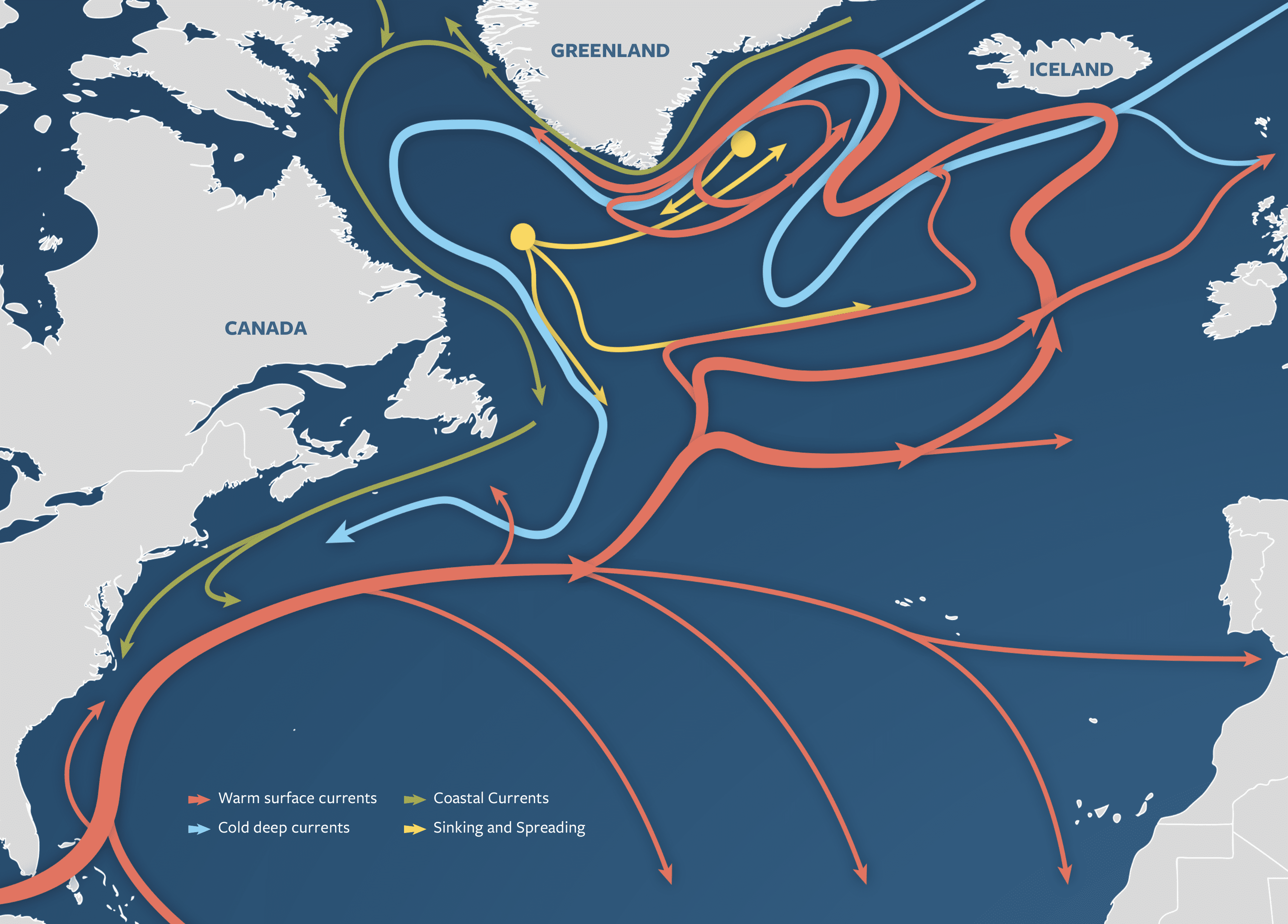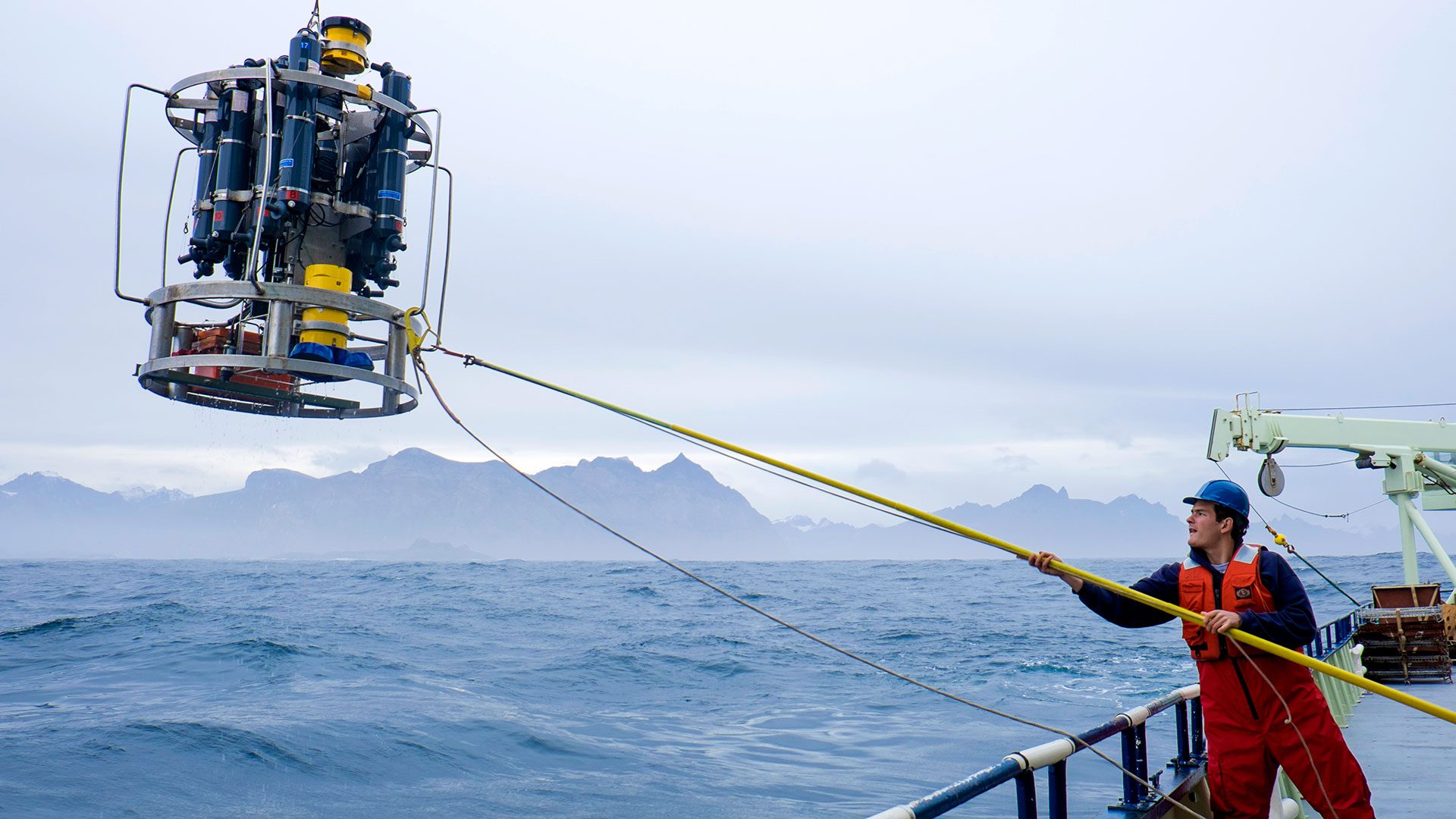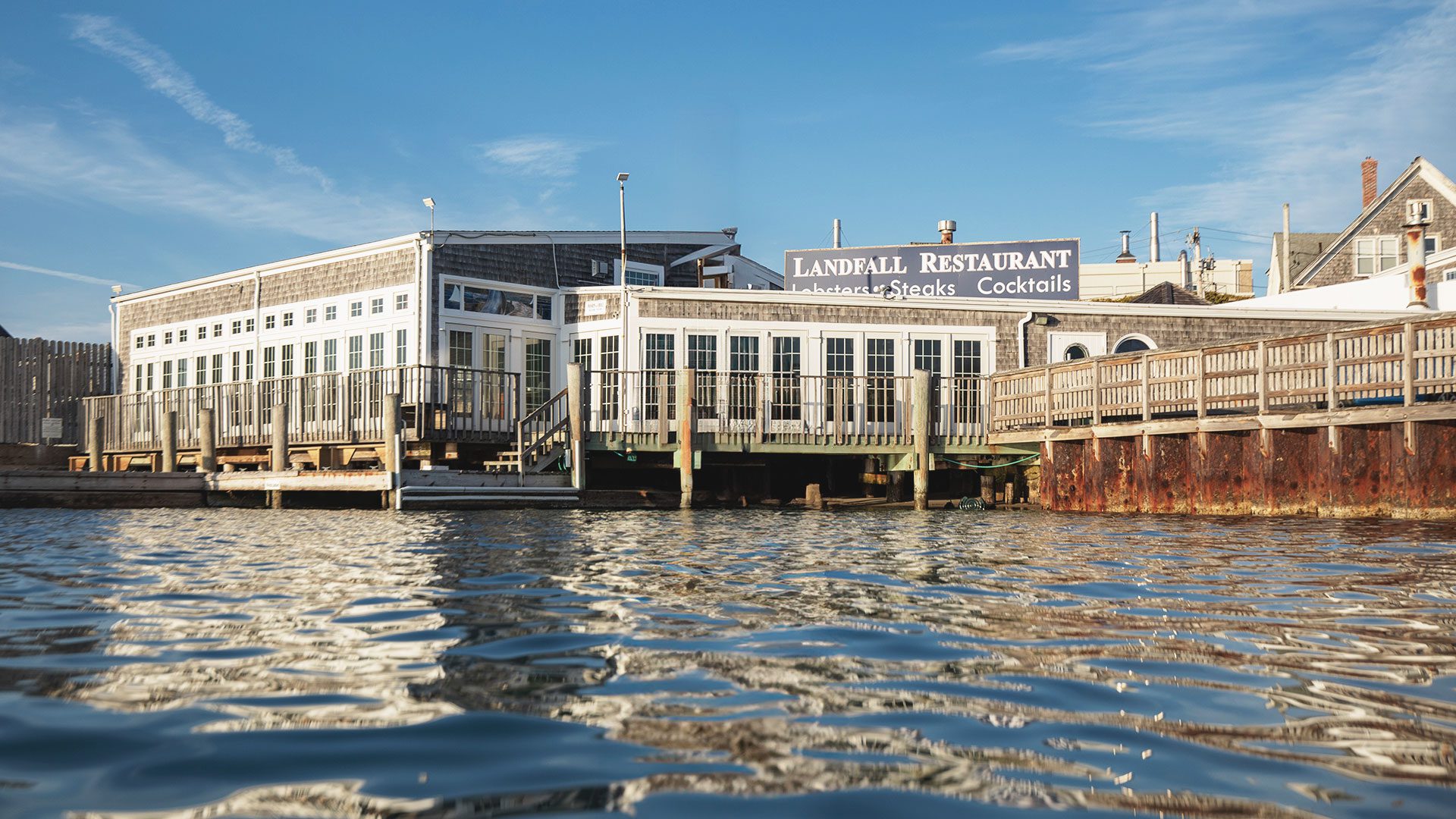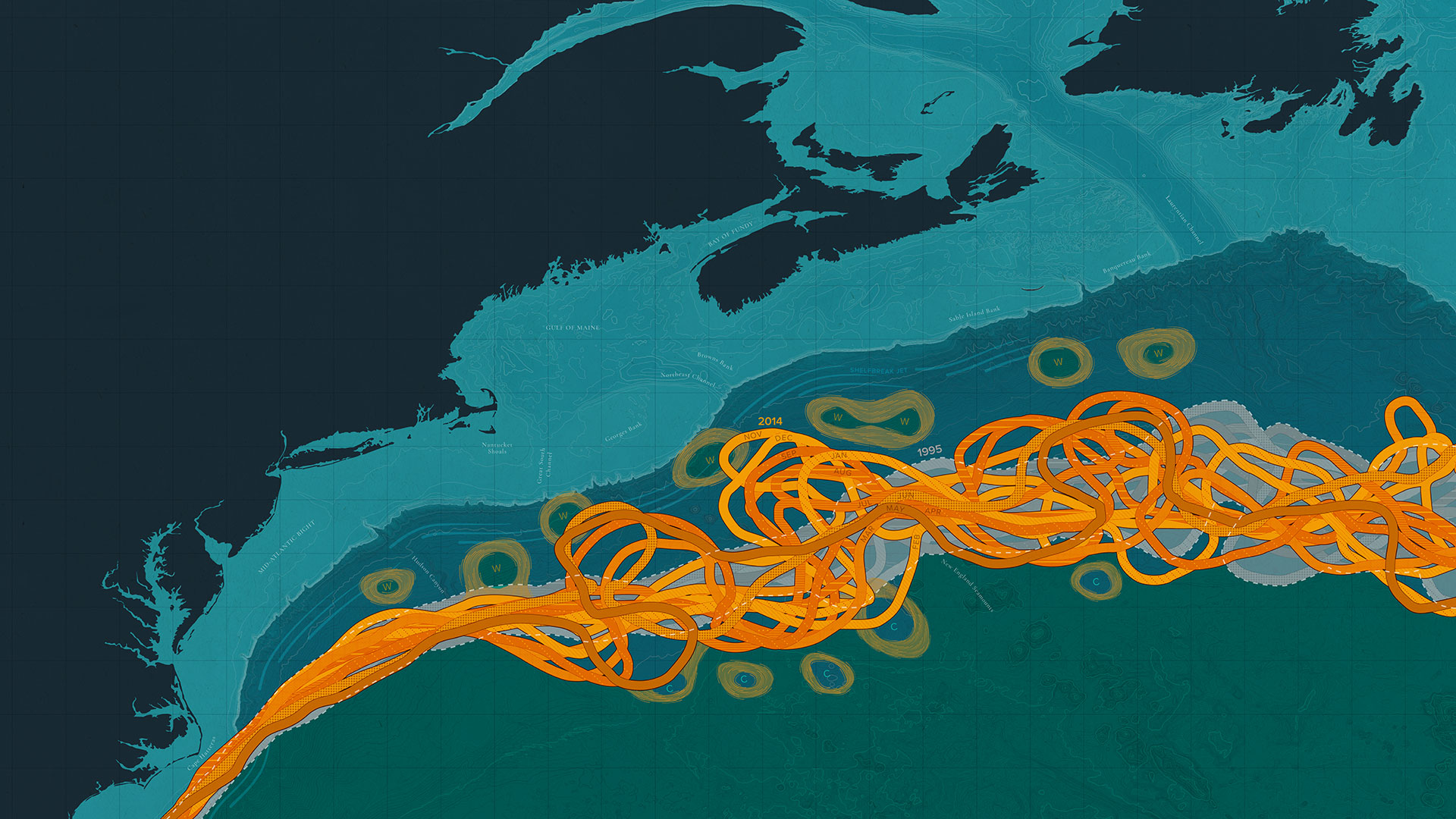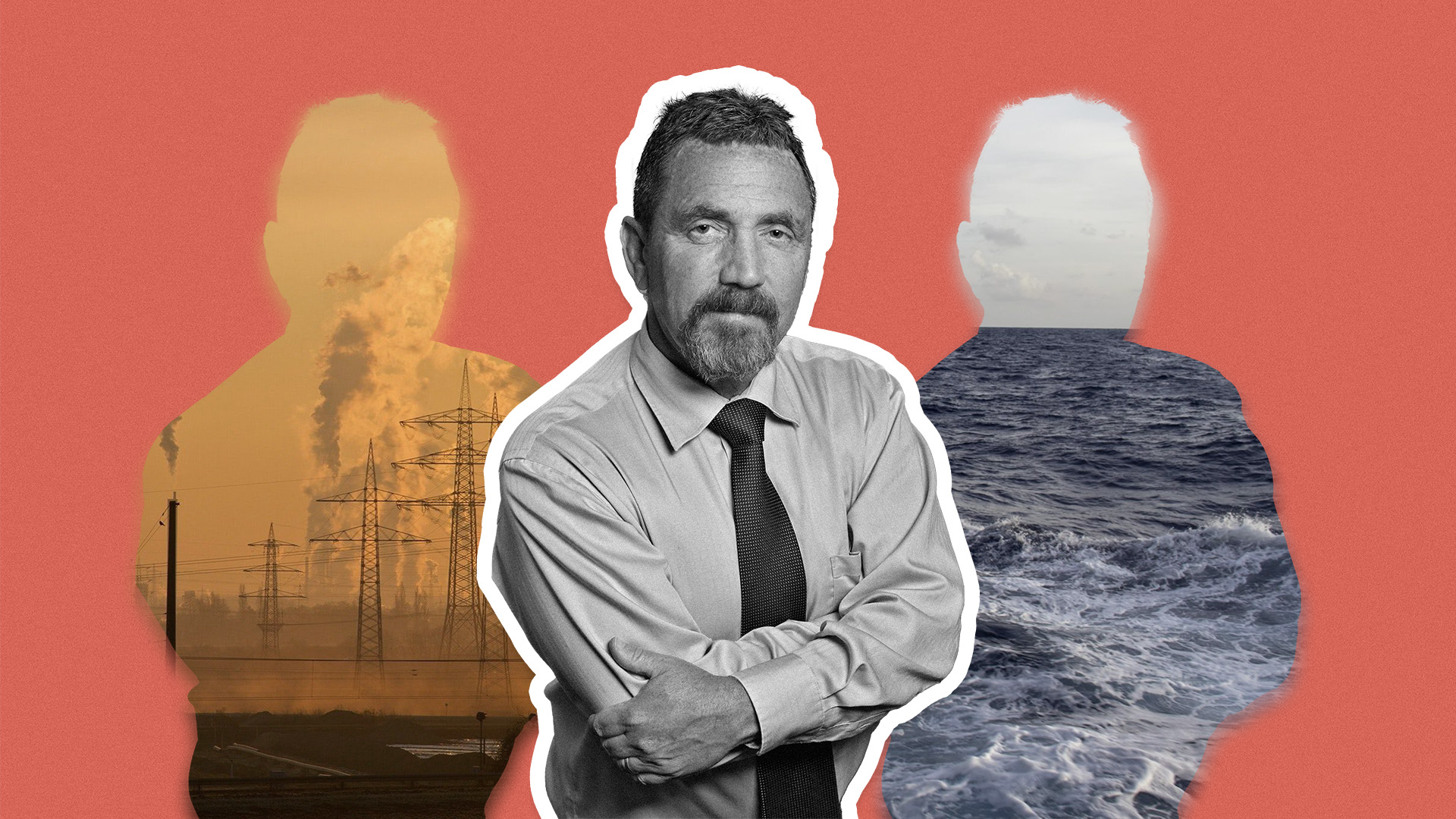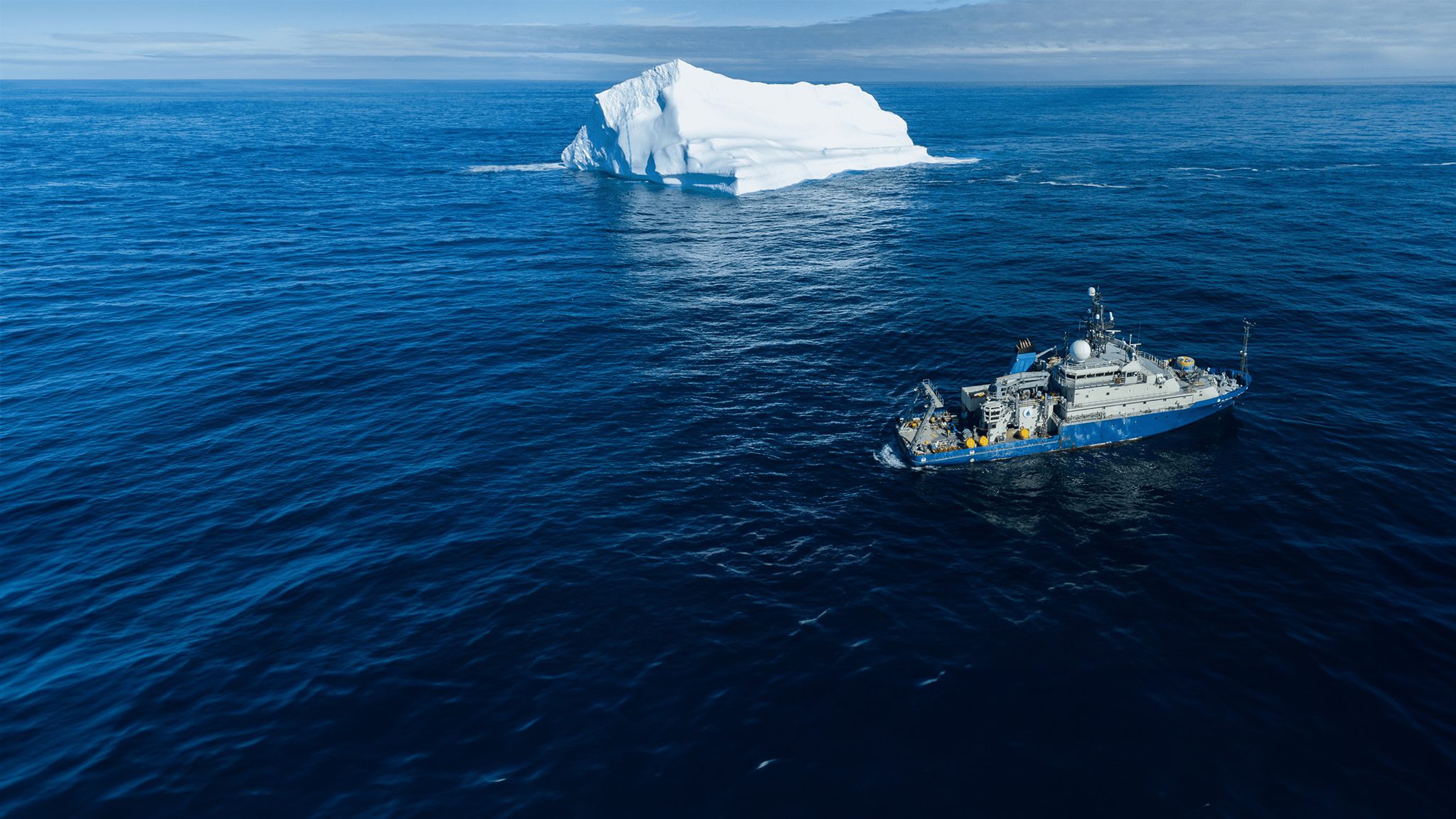
What’s happening with AMOC?
Scientists discuss the state of the Atlantic Ocean’s ‘conveyor belt’
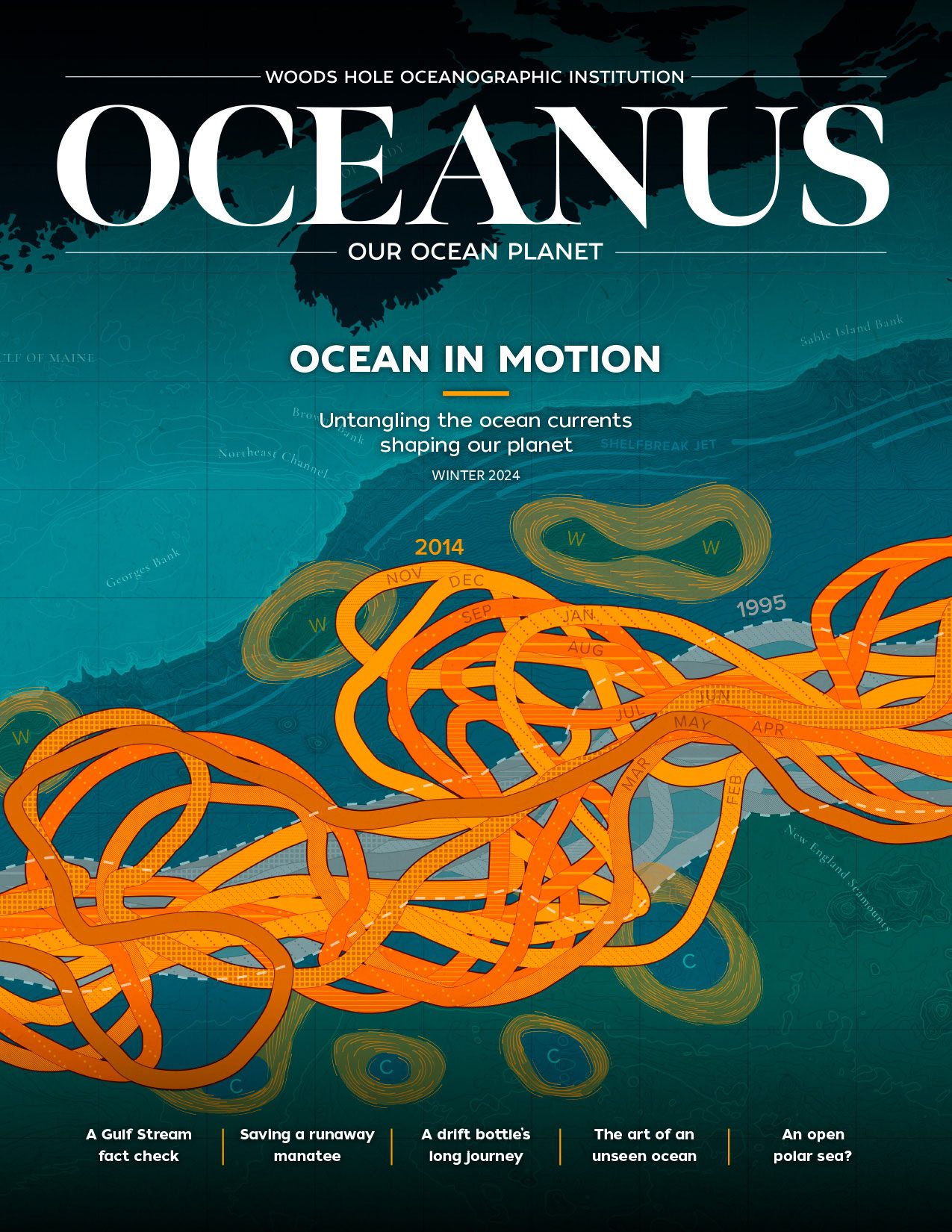 This article printed in Oceanus Winter 2024
This article printed in Oceanus Winter 2024
Estimated reading time: 9 minutes
A recent article in Nature Communications warns of a forthcoming collapse of the Atlantic Meridional Overturning Circulation (AMOC), with a transition most likely to occur between 2025-2095. Other scientists, though, say it is questionable whether a collapse could occur this century. However, if a collapse were to happen to the AMOC, there could be global ramifications, including abrupt cooling across large parts of the northern hemisphere, changes in tropical rainfall, and non-linear changes in sea-level rise in the North Atlantic Ocean.
The AMOC is a complex system of ocean currents that distribute heat throughout the Atlantic by transporting warmer waters north and cooler waters south. In this way, the AMOC, which is part of a global “conveyor belt,” helps regulate Earth’s climate; and through its impact on climate, the AMOC affects patterns of drought, flooding, disease, and mass migrations. Scientists say an AMOC shutdown may have occurred previously during the transition out of the last ice age about 14,500 years ago.
Oceanus spoke with three WHOI scientists — physical oceanographers Nicholas Foukal and Jiayan Yang and paleoceanographer Sophie Hines—to get their take on what is happening with this critical ocean circulation system, find out how they’re studying it, and learn about how changes in the AMOC could affect global climate change and ultimately all of us.
Based on your work, do you feel the AMOC is close to reaching a tipping point?
Foukal: I don't know if the AMOC is reaching a tipping point, but this discussion is a good reminder that we should distinguish between an AMOC weakening that is predicted by the Intergovernmental Panel on Climate Change (IPCC) models to occur over the next century and has very strong scientific consensus, and a collapse that could happen over the course of a few years but is more speculative at this point. Though both would be catastrophic, a collapse would provide very little warning and likely lead to many consequences that we do not fully understand at this point. We have a better idea of what a weakening would entail: Europe would cool, the North Atlantic storm track would strengthen – which affects the entire eastern seaboard of the U.S. as well as Europe – and precipitation patterns over equatorial regions would shift southward. These effects would directly impact agriculture, food prices, transportation, construction, disease, immigration, and political stability. One of the most scientifically robust results at this point is that the AMOC is strongly connected to precipitation over the Sahel, a region that just experienced its seventh political coup in the past three years. I don’t think this is a coincidence—climate variability is directly linked to economic impacts and political stability. This recent Nature Communications article is an important step forward on this topic because it provides a proposed timeline for an AMOC collapse by mid-century based on historical ocean temperature measurements, but it does not provide information on why the AMOC would collapse then, if at all. The lack of information on this topic does not mean the AMOC will not collapse, just that we do not know enough at this point to say one way or the other. Uncertainty on a topic of this magnitude should be worrisome enough.
Yang: I don't know whether the AMOC is near a tipping point or not. The AMOC has a lot of variability, it changes from year to year and from decade to decade, and a lot of that change is related to natural climate variability. If AMOC variability this year is less than last year, it's probably not due to the AMOC slowing down but rather might be year-to-year change. If there is variability along a longer time scale, perhaps 30 or 50 years, that could indicate a slowdown. The AMOC is a complex system with many processes that can affect it. For instance, we need to understand how bathymetry affects the AMOC’s response to the atmosphere so that we can predict future AMOC changes.
To have better AMOC predictions for societal benefit, we need to have robust climate science and a sufficient understanding of the dynamics of the climate system. However, if climate models predict that we are near a tipping point and that the AMOC will shut down, we should pay attention to that. Even if we don’t yet have the observational data sufficient to prove whether this is a shutdown or not, we should not wait for another 50 years to collect the data—because that might be already too late.
Hines: I’m not strongly in one camp or another as to whether the AMOC is coming to a tipping point. The challenge is that we don’t have very long observational records. Because the AMOC is such an important part of Earth’s climate system, it’s so important to understand what is driving the AMOC, how it is changing today, and how it has changed in the past. Reconstructions of climate in the past indicate that you can have pretty rapid and large changes in climate, and we want to understand what drives those tipping points or where they occur, so we can be prepared.
Given the complexity of the system, how can we get a better read on what the AMOC is doing and what it may do in the future?
Foukal: Our direct observations of the AMOC extend back to 2004, but we need a longer baseline in order to characterize the time scales on which the system varies. The ocean moves more slowly than the atmosphere, so it’s natural to think that the ocean should be responsible for low-frequency variability in our climate system. But it’s hard to detect long-term trends in a system that can have decadal or multi-decadal variability. In addition, many computer models struggle to properly simulate the AMOC. A big field of research is how to better model the AMOC so we can better understand its internal variability and how it responds to external forces such as ice melting. We need to understand if we are anywhere near that collapse or not, and how to avoid it if possible.
Hines: There is a different perspective you get from looking at Earth's climate over thousands and millions of years that is really powerful. We have been able to observe through different proxy data phenomenal changes in global climate that have happened in the past. Understanding what drives changes in the AMOC is important for knowing if it will change more in the future and if we should be concerned about that. Paleoceanography can provide access to longer timescales that are still relevant. Using different paleoceanographic reconstructions of climate, we can look at rapid and large changes in the AMOC in the past.
While there is a lot of natural variability in the AMOC, we also know that anthropogenic climate changes happening right now are real and are having an effect on the AMOC. It’s difficult to disentangle natural variability and anthropogenic-caused change. One way to address what's happening now is to develop a better understanding of the Earth's climate system, including the AMOC.
Can you talk about some of the AMOC-related research you’re currently involved with?
Yang: One of my projects focuses on investigating the linkages between the AMOC and sea level variability on the Northwest Atlantic shelf over interannual and decadal time scale. If we understand why the AMOC changes on different timescales, it can help us predict the future of AMOC change. Our goal is to identify and understand key cross-shelf processes and mechanisms connecting the AMOC and this variability to develop predictive skills for coastal seal level changes and to improve climate models in how they represent coastal processes.
Another project is investigating the forcing mechanisms of a large anomaly in sea surface height in the Northwest Atlantic Ocean between the coast and the Gulf Stream, where the sea level was about 7-8 centimeters higher from 2008-2018 than it was in 1993-2007. The project also will examine how sea-level change on the continental shelf and in the open ocean are connected, and it will investigate whether and how sea level changes on the Newfoundland and Scotian shelves may have affected coastal circulations and sea level off the Northeast U.S. Our study will lead to a better understanding dynamical processes interacting in a rapidly changing climate system and will improve our understanding of how coastal oceans respond to climate-induced changes.
Foukal: The commonality of my research is to understand what mechanisms cause changes in the AMOC. Two projects I’m currently involved with regard: (1) the transport and fate of the Labrador Coastal Current and (2) the pathways and fate of fresh water near the southern tip of Greenland. We’re at the stage of just mapping the currents around Greenland and Labrador, which is essentially first-order physical oceanography. We essentially threw a bunch of GPS beacons – on drifters and profiling floats – into the water around the southern tip of Greenland to figure out where they go. It’s “message in a bottle-almost” type oceanography. Yet, nobody had done that. It boggles my mind that there’s so much progress to be made in this field.
For the Labrador shelf project, we are putting moorings on the Labrador Shelf to track the coastal current and measure the total volume transport there. The idea here is to determine if the Arctic were to release freshwater into the North Atlantic as has been widely hypothesized, where would it go and what impact would it have?
Hines: My research focuses on trying to understand how the ocean circulation has changed, and how that contributed to the overall climate change. Thinking about relatively recent changes in the AMOC, I've been trying to reconstruct changes using some deep-sea corals that live thousands of meters below the ocean surface. The coral skeletons can preserve information about changes in the water where they have grown. I've been using high resolution radiocarbon measurements of corals from along the coast of North America to examine recent AMOC variability. This can help provide a more complete picture of recent AMOC trends and to help shed light on how the AMOC will change in the future.
Another project looks back much further in time, in trying to understand connections between deep ocean circulation and the timing of Earth's ice ages. Observations indicate the pacing of ice ages changed about a million years ago, with ice ages becoming longer in duration and more intense. I am using a sediment core from the South Atlantic Ocean to reconstruct changes in deep ocean circulation over the Mid-Pleistocene Transition when ice ages became more intense and longer. I want to understand what role deep ocean circulation may have played in contributing to this major climate transition.

